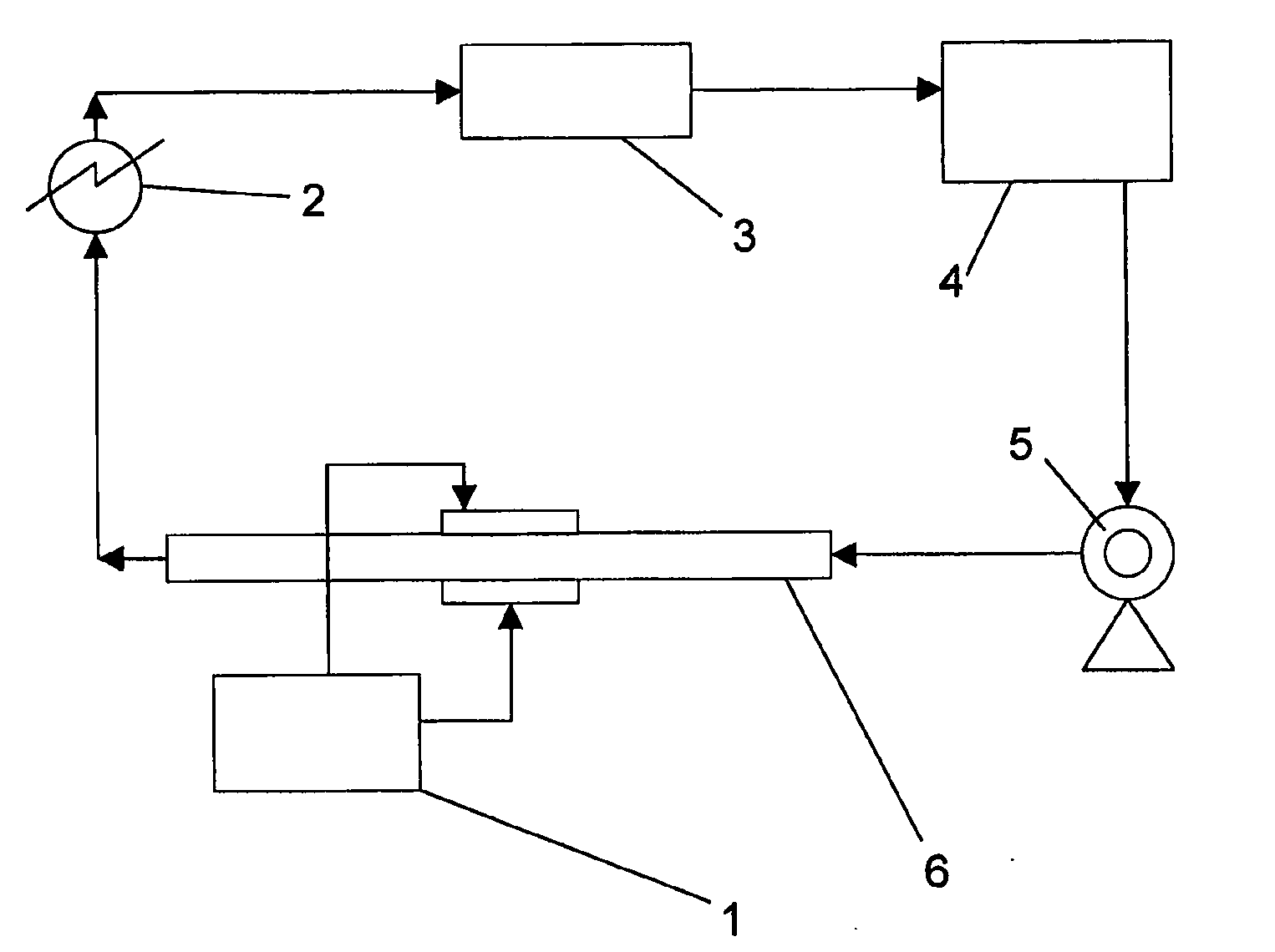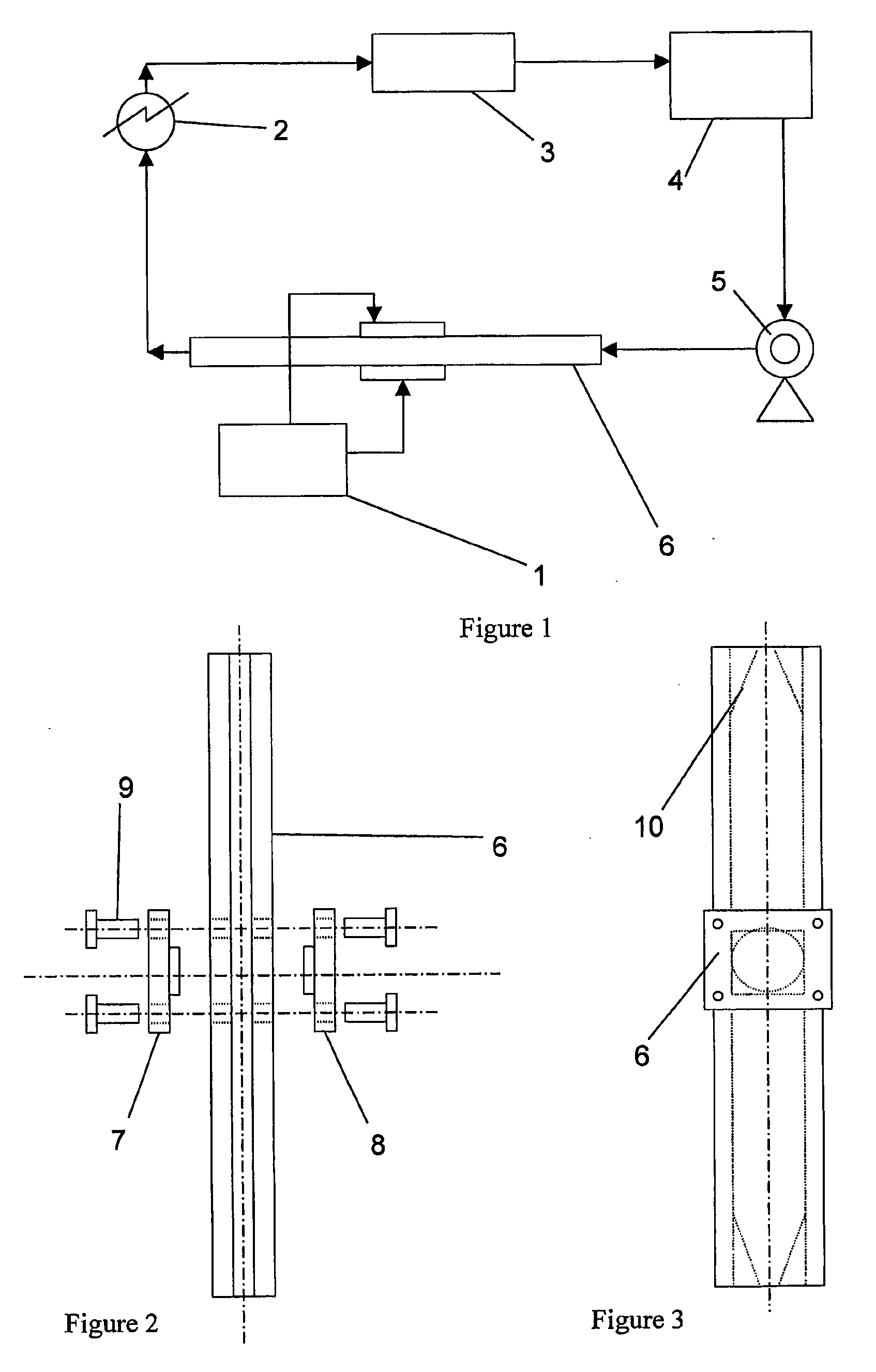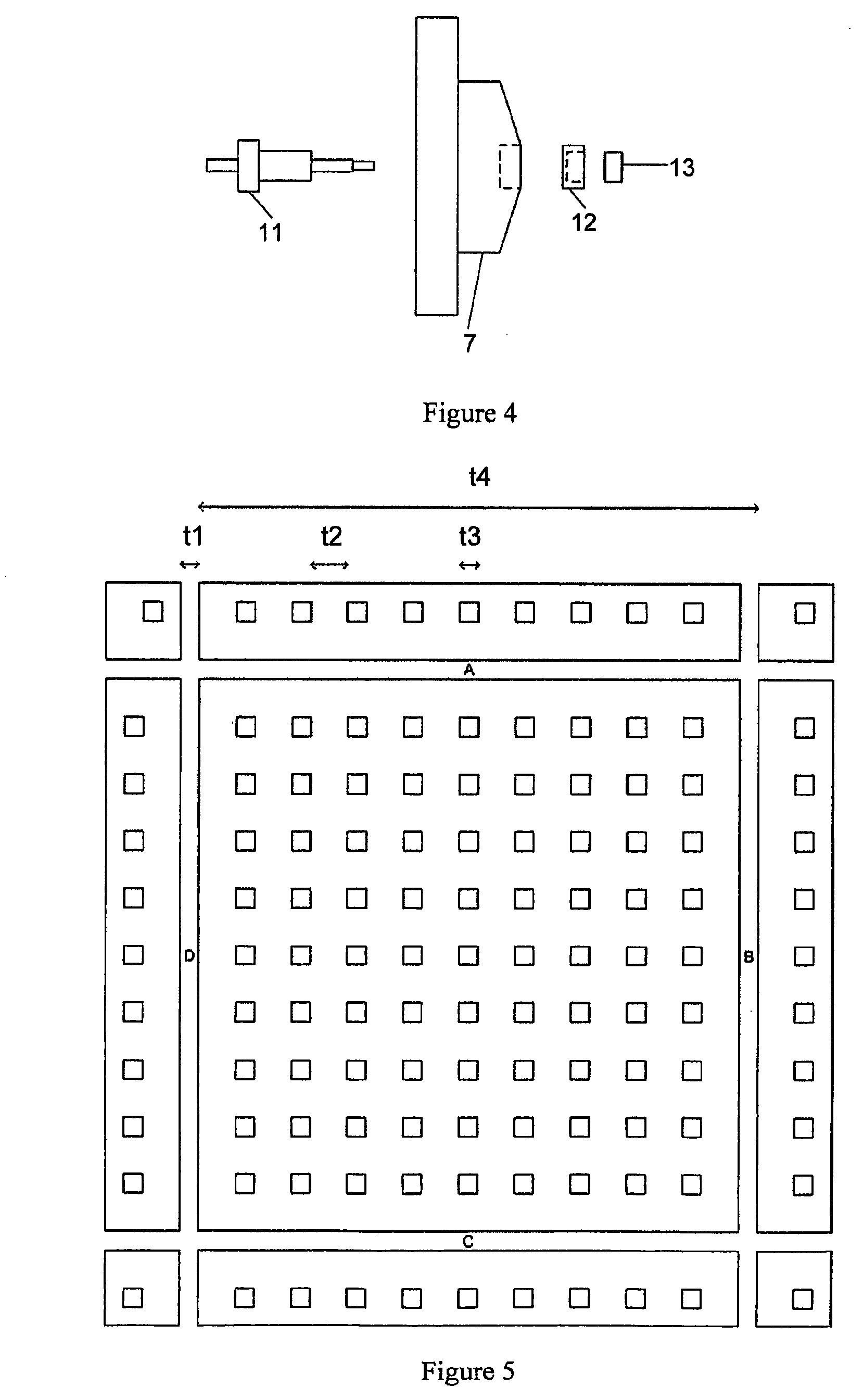Process for Manufacturing Micro-and Nano-Devices
a nano- and nano-device technology, applied in the field of process for manufacturing micro- and nano-devices, can solve the problems that the manufacturing of micro- and nano-devices cannot be achieved by simple mechanical methods such as cutting, sawing, milling, drilling, etc., and achieves the effects of reducing the cost of production
- Summary
- Abstract
- Description
- Claims
- Application Information
AI Technical Summary
Benefits of technology
Problems solved by technology
Method used
Image
Examples
Embodiment Construction
[0039]The vertical flow system for the main etching experiments has been described in literature for electrodeposition experiments (Meuleman, W. R. A., et al., J. Electrochem. Soc. 149, C479-C486 (2002); Dulal, S. M. S. I., et al., Electrochim. Acta, 49, 2041-2049 (2004)). The design of the flow cell, which is shown in FIGS. 2 and 3, was based on a model previously constructed by Roy et al. (Roy, S., et al., Chem. Eng. Science, 56, 5025 (2001)). The flow system, which is illustrated in FIG. 1, consisted of the flow cell 6 with two electrode holders, one for the cathode 7 and one for the anode 8, a heat exchanger 2, a filter unit / settling tank 3, an electrolyte reservoir 4, magnetically coupled pump 5, and a flow meter (not shown). The power supply 1 is coupled to the anode and cathode.
[0040]The cross-section of the flow cell as seen in FIG. 2 was rectangular and the electrolyte circulated upwards through the channel. The electrolyte was stored in a reservoir 4 and the velocity of th...
PUM
| Property | Measurement | Unit |
|---|---|---|
| Length | aaaaa | aaaaa |
| Molar density | aaaaa | aaaaa |
| Time | aaaaa | aaaaa |
Abstract
Description
Claims
Application Information
 Login to View More
Login to View More - R&D
- Intellectual Property
- Life Sciences
- Materials
- Tech Scout
- Unparalleled Data Quality
- Higher Quality Content
- 60% Fewer Hallucinations
Browse by: Latest US Patents, China's latest patents, Technical Efficacy Thesaurus, Application Domain, Technology Topic, Popular Technical Reports.
© 2025 PatSnap. All rights reserved.Legal|Privacy policy|Modern Slavery Act Transparency Statement|Sitemap|About US| Contact US: help@patsnap.com



